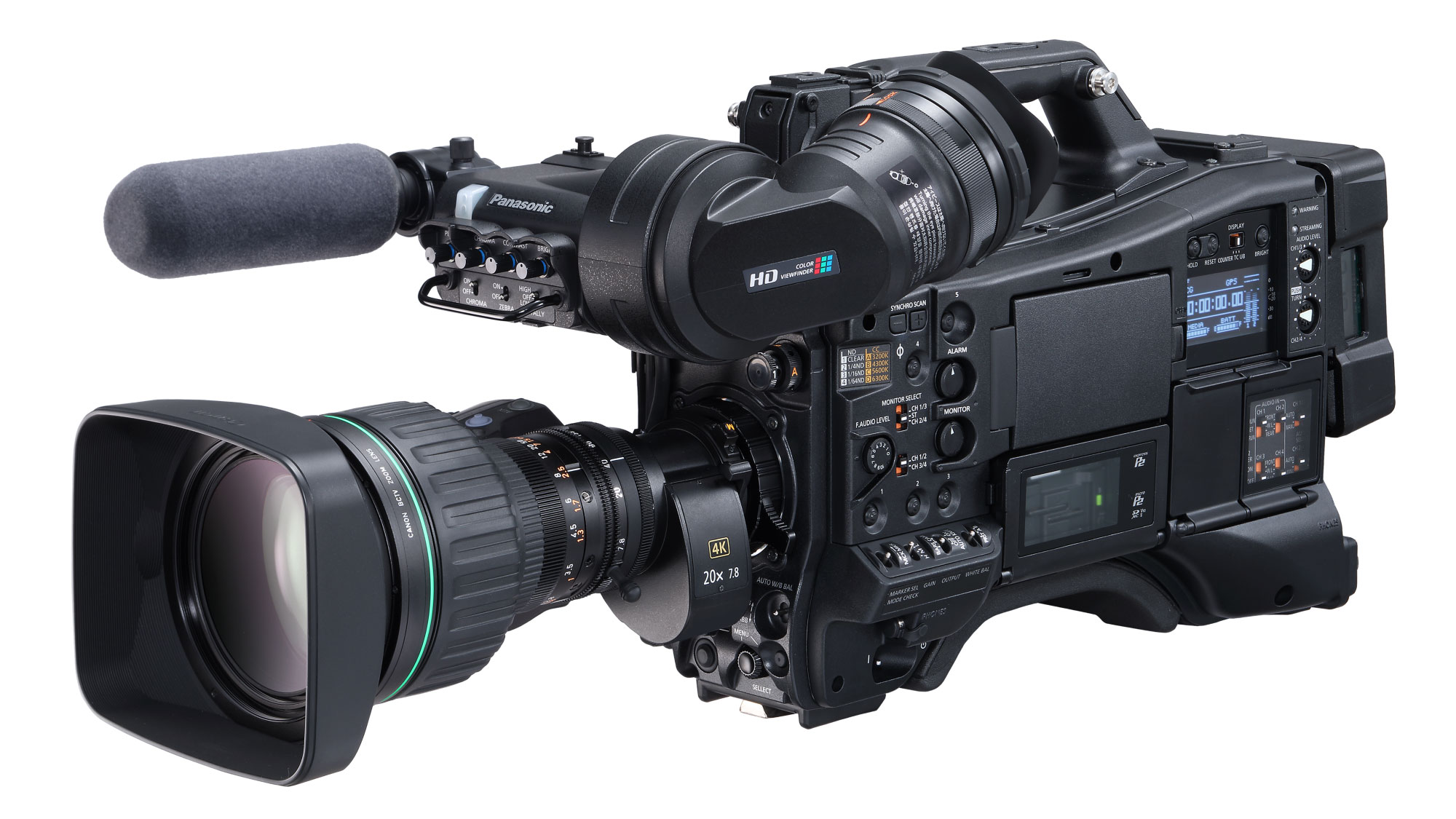Panasonic said the AJ-CX4000, a 4K HDR-capable shoulder-mount broadcast camcorder introduced at IBC this year, will ship at the end of this month for an MSRP of $25,000.
The AJ-CX4000 has a B4 lens mount and a 4.4K image sensor. It features what Panasonic calls large single-sensor internal expansion lens (or LSSIEL, pronounced luh-SEAL) technology, which allows a B4 lens designed for 2/3-inch type sensors to be used with a one-inch sensor inside the camera. The idea is to give broadcast users a low-cost, high-quality, future-proof camera for transitioning to 4K that works with existing lenses, fits into a legacy studio environment, and doesn’t change up picture characteristics like depth of field.
The larger sensor makes sense in part because the photosites for a 2/3-inch sensor with a true UHD resolution (3840 x 2160) would necessarily be extremely small — four times smaller than their counterparts on an HD sensor. And that leads to issues with sensitivity, dynamic range, and defocusing at small aperture settings. So Panasonic designed an internal “expansion lens” that expands the 2/3-inch image circle to cover a larger sensor with much bigger photosites. Like other single-chip cameras, the CX4000 uses a Bayer filter to generate the color signal.
Other Panasonic cameras using the same technology include the AK-UC3000 and AK-UC4000 4K HDR studio cameras and the AK-UB300 4K HDR box camera.

Panasonic AJ-CX4000 camcorder
Panasonic
The camera outputs 10-bit 4:2:2 UHD at up to 60p via 12G-SDI, and supports HLG workflow for HDR, with recording-assist functions including SDR monitoring gamma, parallel HDR and SDR output, an HDR/SDR selector for the EVF and LCD, and an eight-mode gamma selection. The AJ-CX4000 records to MOV files that match the format used by Panasonic’s AG-CX350 and AU-EVA1 cameras, the company said. Recording AVC-Intra or AVC-LongG MXF P2 files to ExpressP2, MicroP2 or SDXC memory cards is also supported.
RTMP, RTMPS and RTSP live-streaming protocols are supported, as is NDI HX for live production (with a license purchased from NewTek). The camera can also be controlled over IP, allowing it to be linked up to a system also using a Panasonic remote camera, the company said.
Four-channel digital audio recording is supported, with selectable sources for each channel including mic in, line in, and wireless receiver. Two XLR terminals are compatible with +48V phantom power, Panasonic said. The camera body also has HDMI out, timecode in and out, Genlock in, and USB 3.0 and USB 2.0 ports.